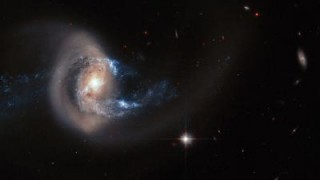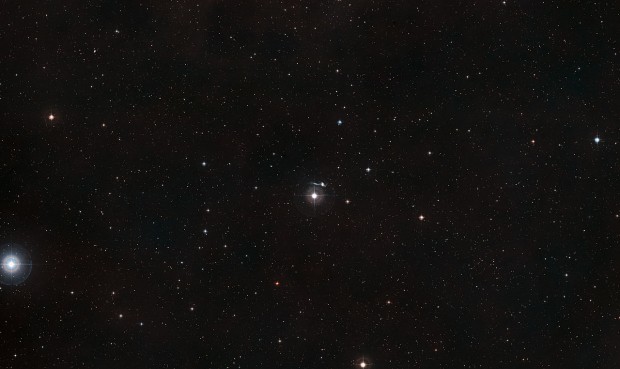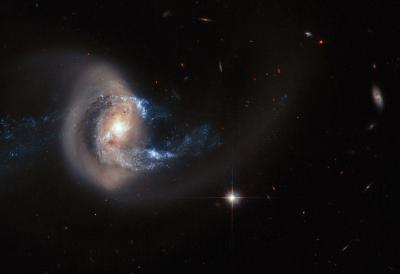
The Hubble Space Telescope has captured a gorgeous image of spiral galaxy NGC 7714. Situated in the constellation Pisces, the galaxy has now shifted too close to another galaxy (NGC 7715) and become twisted and disfigured.
Galaxy NGC 7714 was first discovered by John Herschel in the early 1800s. It is approximately 100 million light-years from Earth, representing a relatively close neighbor, and has recently undergone some rather tumultuous changes.
The shape of NGC 7714’s spiral arms, along with its partially distorted galactic center, are telltale sign of its violent history. The overall shape of the galaxy has been altered by companion galaxy NGC 7715, which has pulled 7714’s arms into space and triggered breathtaking eruptions of star formation.
Between 100 and 200 million years ago, NGC 7714 and 7715 started to move dangerously close to one another. This culminated in the development of two long streams of stars that swept out from NGC 7714, connecting both galaxies to each other.
In a recent press release, the authors of the study explained that this phenomenon has fashioned a bridge-like connection. This pathway has caused material from NGC 7715 to be funneled towards its bigger companion, in turn, triggering a torrent of star formation. While the galactic center of NGC 7714 appears to be the main region where stars are being born, the researchers say that such star formation is taking place throughout the entire galaxy.
The astronomers have classified NGC 7714 as a regular Wolf-Rayet starburst galaxy, packed with Wolf-Rayet stars. Star formation within the galaxy is occurring at an accelerated rate, with 7714 now occupied by intensely bright, high temperature stars.
The Hubble Image is formed from a number of observations, arranged in a mosaic to produce a much larger impression of the ongoing merger between the two galaxies.


